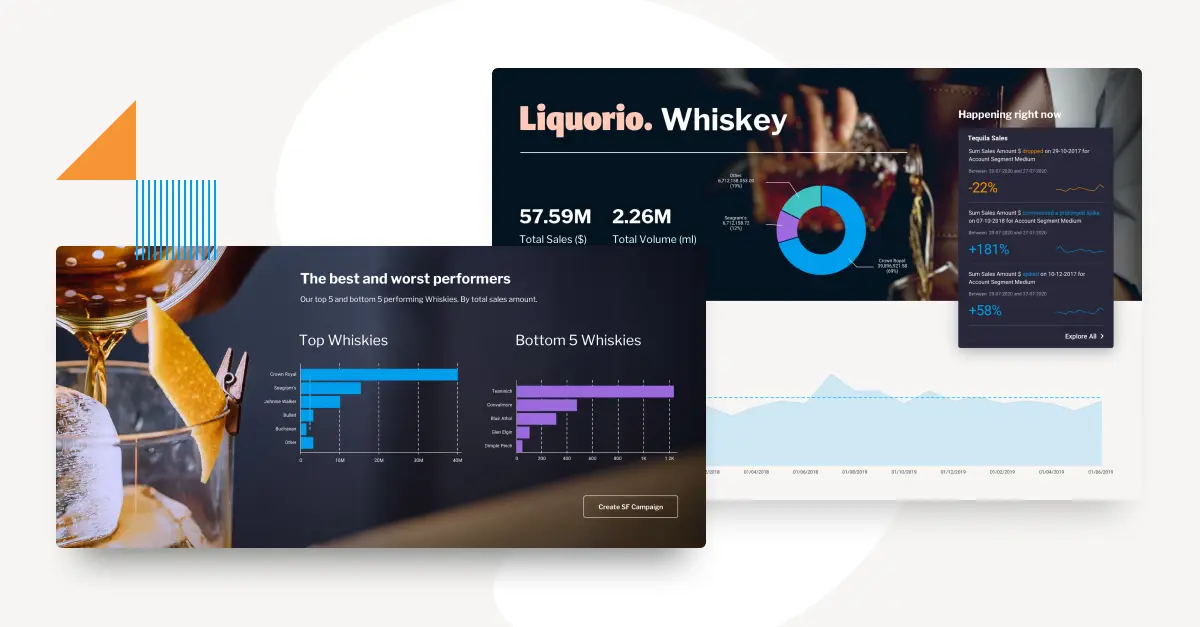Data is the backbone of modern business, and in the dynamic retail landscape, harnessing this power through retail data analytics isn't just an advantage, it's essential.
With the right business intelligence (BI) tool, retailers can transform vast amounts of transactional data into actionable insights, helping optimize operations significantly.
Gone are the days when intuition alone sufficed. Without retail store analytics, it's like a shopkeeper trying to run a business blindfolded and making purchasing, staffing, and marketing decisions based on guesswork, rather than what's really flying off the shelves.
This blog series will explore the myriad ways retail analytics software is important for the retail industry, its use cases and benefits.
Key takeaways
- Retail analytics transforms raw data into insights that improve operations, marketing, and customer experience.
- Types of retail analytics include descriptive, diagnostic, predictive, and prescriptive analytics.
- Tools like Yellowfin benefits the retail industry by offering embedded dashboards, alerts, and customization for real-time, data-driven decision-making.
- Analytics drives revenue growth, cost efficiency, and customer loyalty.
Blog Contents
show
What is retail data analytics?
Simply put, it's the science of gathering, examining, and summarizing information about a retailer's business activities. Think of it as peeling back the layers of your entire operation to truly understand what's happening.
Today, data analysis in the retail industry goes far beyond basic sales reports. It involves deep dives into consumer behavior, streamlining supply chain optimization, and enhancing every single facet of your business using retail analytics software.
From precise inventory management to crafting highly targeted marketing campaigns, and even understanding why customers choose one product over another, retail store analysis provides data-driven insights you need to make decisions based on actual performance rather than just gut feeling.
Analyzing data from various sources, like customer purchase histories, call center logs, and point-of-sale (POS) systems, allows you to make informed adjustments to your product offerings, pricing strategies, return policies, and even the layout of your physical and online stores. Retail analytics software such as Yellowfin empowers you to prepare and monitor these business-critical information categories with multiple types of tools, including interactive BI dashboards, several types of charts, and AI-powered features like AI NLQ.
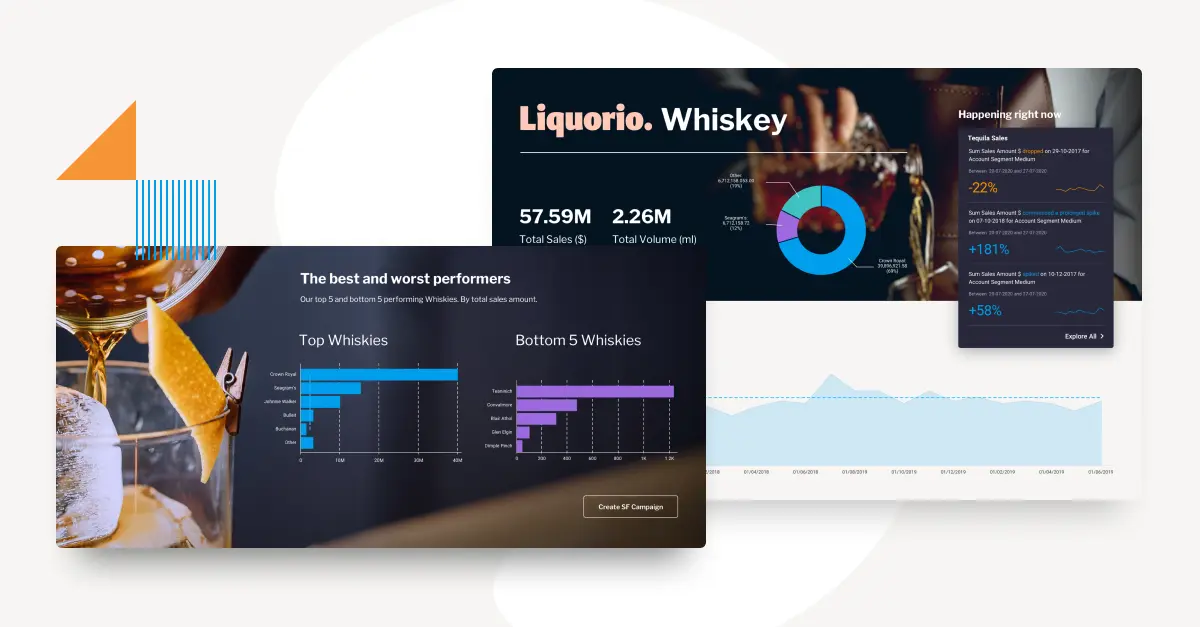 Ultimately, retail data analytics is about transforming raw store data into clear, actionable intelligence that drives retail success and unlocks a myriad of benefits (boosted revenue, lower expenses, enhancing customer loyalty, etc).
Ultimately, retail data analytics is about transforming raw store data into clear, actionable intelligence that drives retail success and unlocks a myriad of benefits (boosted revenue, lower expenses, enhancing customer loyalty, etc).
What are the types of retail analytics?
When we talk about retail data analytics or any analytical processes in other industries, it's helpful to understand that not all analysis is the same. Broadly speaking, there are four main categories, each building on the last to offer deeper insights and guidance. Descriptive analytics: This is often where most businesses start. The focus is on what happened. It's about answering fundamental questions like "How many units did we sell last week?" "Where were our highest sales?" or "What was our inventory level yesterday?" Think of it as summarizing historical performance, typically seen in your dashboards and standard reports that give you a clear picture of past results. It's the foundation upon which more advanced analysis is built. Diagnostic analytics: Once you know what happened, the next natural question is "why did it happen?" Diagnostic analytics helps you dig into the root causes of problems or successes. If sales suddenly dropped in a particular store, diagnostic analytics would help you investigate by pulling together data from various sources, like financial performance, operational metrics, or even customer feedback, to uncover the underlying reasons. It's about figuring out the "why" behind the "what." Predictive analytics: The aim is to forecast and answer "what will happen?". This type of analysis uses historical data, along with various influencing factors such as economic trends, weather patterns, or even potential supply chain disruptions, to project future outcomes. For instance, it can help a retailer model the impact of offering a 10% versus a 15% discount on a product, or predict when a specific item might run out of stock under different scenarios. Prescriptive analytics: This is the most advanced form, leveraging the insights from predictive analytics to suggest what you should do next. Prescriptive analytics often combines AI analytics tools to recommend specific actions or interventions. For example, using Yellowfin's natural language query (NLQ) tool to query customer purchase history might provide relevant analysis on the best product to upsell based on historical data, or suggest a cross-sell to meet a new client's request. It goes beyond predicting to provide actionable guidance, telling you the best course correction or opportunity to pursue. Of course, not every retail business has the same use cases.How is retail analytics used?
Retail sales analytics in practice is about using data in real-time to make smarter decisions across your business. Think of it less like a theoretical exercise and more like a vital tool for improving your operations and strategy. Managing inventory and supply chain: Imagine knowing precisely how much stock you need, when, and where. Using retail analytics solutions can help with demand forecasting by looking at past sales, trends, and even outside factors like holidays or local events. This means you can keep just the right amount of product, avoiding costly overstock and preventing the frustration of running out of popular items. It makes your supply chain much more efficient. Understanding and engaging customers: Your customer data holds a goldmine of information. By being able to analyze purchase history, website visits, loyalty program data, and even feedback with a retail data analytics solution, you can build a clearer picture of who your customers are and what they want. This allows for truly personalized experiences – from recommending products they'll like to sending relevant promotions. Better understanding leads to stronger customer relationships and repeat business. Setting prices and running promotions: Pricing can be tricky. Retail analytics provides insights to set competitive prices, sometimes even adjusting them dynamically based on market conditions or competitor moves. It also helps you understand which past promotions worked best and how to design future ones that will genuinely appeal to specific customer groups, ensuring marketing spend is more effective.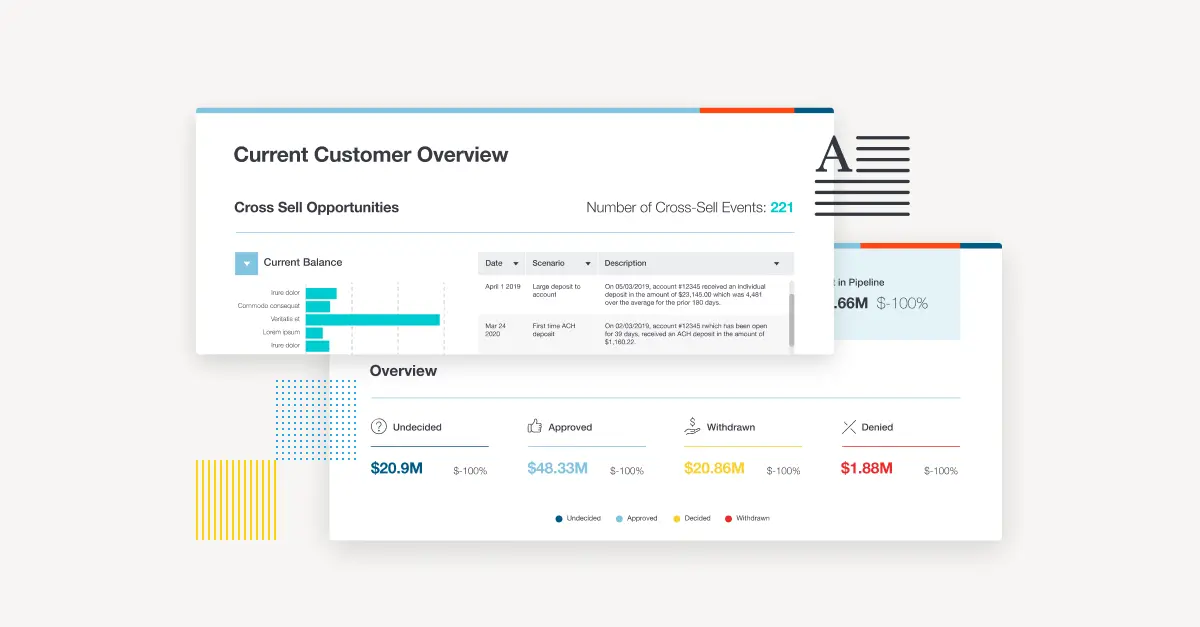 Measuring marketing impact: Are your marketing campaigns actually bringing in sales? Retail analytics allows you to connect your marketing efforts directly to sales results, both online and offline. This means you can see what's working, refine your campaigns, and allocate your marketing budget to the initiatives that deliver the best returns.
Web analytics: Web analytics combined with a retail analytics solution can help retailers understand how customers interact with their online stores. Businesses can improve website layout and identify best traffic sources through web analytics by observing page views, bounce rates, and user conversion paths. Through this information, retailers make better decisions about where to display their products, in addition to effective promotional targeting, leading to improved sales outcomes.
Business intelligence (BI) and increased analytics adoption: Having a retail analytics software solution and providing the capability for staff to more easily access and explore operational data can significantly increase data-driven decision-making and analytics buy-in for your investment. For example, providing key performance indicators (KPIs) like inventory turns and sell-through rate pre-programmed into reports and KPI dashboards can better communicate top-line trends to senior management and peers while encouraging users over time to make data analysis a part of their daily workflows.
As an example of BI in the retail industry, Incuda deployed a white-labeled version of Yellowfin as an analytics solution for their retailer customer-base to assist multi-channel retailers (e-commerce stores, call centers, etc) to gain a detailed view of their business performance from various online and offline channels.
Measuring marketing impact: Are your marketing campaigns actually bringing in sales? Retail analytics allows you to connect your marketing efforts directly to sales results, both online and offline. This means you can see what's working, refine your campaigns, and allocate your marketing budget to the initiatives that deliver the best returns.
Web analytics: Web analytics combined with a retail analytics solution can help retailers understand how customers interact with their online stores. Businesses can improve website layout and identify best traffic sources through web analytics by observing page views, bounce rates, and user conversion paths. Through this information, retailers make better decisions about where to display their products, in addition to effective promotional targeting, leading to improved sales outcomes.
Business intelligence (BI) and increased analytics adoption: Having a retail analytics software solution and providing the capability for staff to more easily access and explore operational data can significantly increase data-driven decision-making and analytics buy-in for your investment. For example, providing key performance indicators (KPIs) like inventory turns and sell-through rate pre-programmed into reports and KPI dashboards can better communicate top-line trends to senior management and peers while encouraging users over time to make data analysis a part of their daily workflows.
As an example of BI in the retail industry, Incuda deployed a white-labeled version of Yellowfin as an analytics solution for their retailer customer-base to assist multi-channel retailers (e-commerce stores, call centers, etc) to gain a detailed view of their business performance from various online and offline channels.
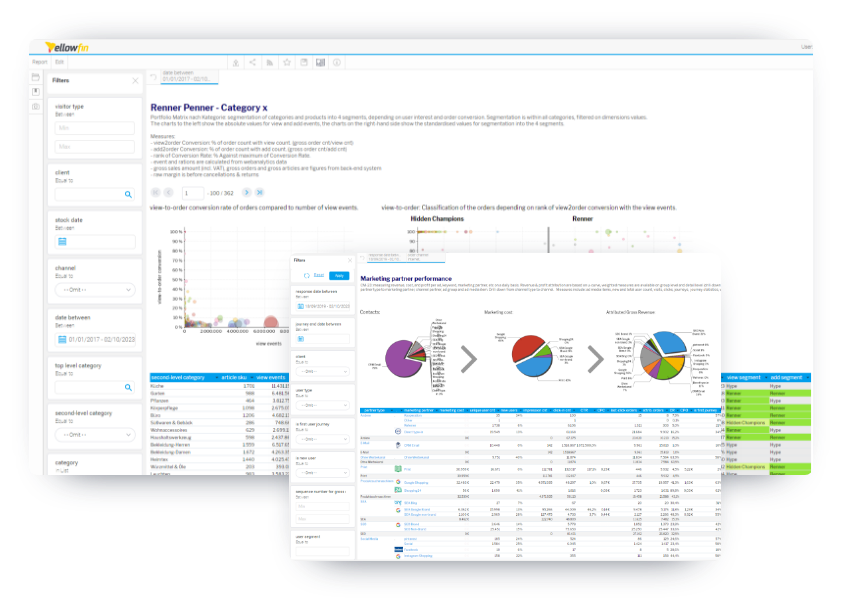 Using Yellowfin's embedded analytics capability to integrate dashboards and reporting into their existing applications, Incuda reported a 50% increase in data consumers (dashboard creators, report consumers) attributed by their use of Yellowfin.
Case study: Incuda unlocks full-stack data warehouse platform with Yellowfin
Using Yellowfin's embedded analytics capability to integrate dashboards and reporting into their existing applications, Incuda reported a 50% increase in data consumers (dashboard creators, report consumers) attributed by their use of Yellowfin.
Case study: Incuda unlocks full-stack data warehouse platform with Yellowfin
BI in the retail industry
As the international retail market becomes increasingly competitive, with mass offshore production and global retail conglomerates driving down prices, the ability to optimize your supply chain, react quickly to marketplace opportunities, and satisfy customer expectations has never been more important. Accessing and maximizing the knowledge within retail data sets has never been more important, and BI in retail industry ultimately plays an important role in knowing these insights and converting the data into strategic decisions. Learn more: How BI Dashboards are Changing the Retail Industry Landscape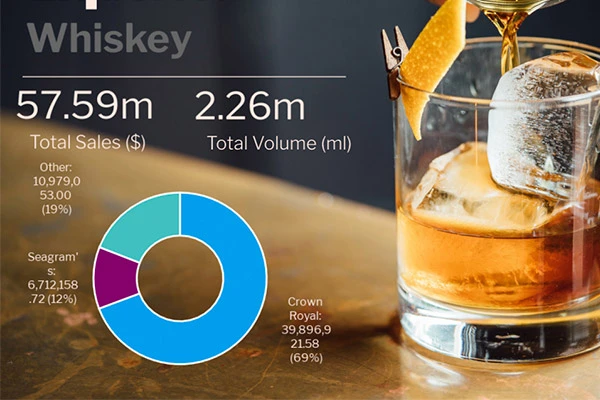
Business intelligence vs embedded analytics in retail
Business intelligence (BI) and embedded analytics provide retail decision-making through data-driven methods and generate outcomes through different analytic deployment models. The use of standalone dashboards and third-party BI tools can facilitate detailed analytics for strategic planning among analysts and executives who purchase the necessary user licenses to access the analytics tool when it is needed. On the other hand, embedded analytics integrates dashboards, reports and other sophisticated analysis tools (such as AI analytics features) directly through standard retail tools, including POSLog systems or eCommerce platforms. Frontline workers benefit most from this type of analytics and BI solution because the ready access to quick insights lead to immediate executable actions, rather than having to switch applications.What customer-centric data should BI tools analyze and report on?
Basic customer-centric data that retailers should capture and analyze with their BI solution includes:- Purchase types: Understand customer purchase history to help effectively promote future product offerings to customer-base.
- Personal information: Help to design effective personalized marketing and communications materials/offerings using customer name, date of birth, or address, etc.
- Customer feedback and sentiment: Help establish successful product types and improve future offerings.
- Frequency of customer spend: Determine the frequency and type of sales and marketing promotions – distinguish impulse buyers from infrequent need-based shoppers. Also detect ‘lost’ customers and formulate strategies to ‘win’ them back.
What are the key data sets that BI tools should be used to analyze and report on in the retail industry?
There are several common data sets critical to the retail industry that BI tools should be used to report on and analyze. These include:- Sales data analytics
- Point of sale data
- Gross margins and revenue
- Turns
- Gross margin return on inventory investment
- Market data
- Market share
- Competitor pricing
- Competitor product lines
- Competitor market share and customer profile
- Promotional and marketing data (or marketing analytics in retail)
- Success of past promotions/customer feedback
- Total cost of promotion
- ROI on promotion
- Pricing offers
- Customer-centric data
- Demographics
- Frequency
- Loyalty
- Etc (see above)
- Supply chain and operations data
- Demand for product types based on region, demographic, time of year, etc
- Identify profitable products
- Keep track of units sold (total or by category)
- Merchandising data/merchandising analytics
- Improve visual merchandising
- Maximize margins
- Drive conversions
What are the benefits of retail analytics?
Developing accurate customer profiles and in-depth operational understandings allow retailers to predict future customer behaviors and industry trends, further enabling the ability to:- Predict customer likelihood to purchase a new product offering
- Identify highly profitable customers by:
- Total value of sales, number of sales, estimated lifetime value
- Identify ‘lost’ customers
- Identify troublesome customers (return policies, etc)
- Identify customers responsive to promotional offerings
- Determine which customers will be more responsive to specific types of marketing
- Recognize which customers will remain loyal to your product despite changes to certain product variables (price, availability, etc)
- Increase profits
- Develop or purchase new product lines with confidence
- Develop highly targeted and successful promotional campaigns based on data collected from past campaigns and customer feedback
- Achieve accurate allocation (type and quantity) of stock across channels and stores, leading to improved efficiency at the supply chain level as well as increased sales and profitability
5 retail analytics best practices
To extract real value from retail analytics, follow these five proven best practices:- Define clear KPIs: The analysis needs specific measurable targets to focus on basket size enhancements, along with churn decrease objectives.
- Ensure clean and integrated data: The analysis requires unified data between point-of-sale systems, customer relationship management systems, and inventory databases.
- Use predictive and prescriptive models: The system delivers predictions that enable customers to create actionable decisions for pricing strategy and inventory management.
- Enable role-based dashboards: Each department, including executives, receives specific dashboard content that displays relevant metrics according to their roles.
- Promote a data-driven culture: A training program for staff should focus on analytics alongside embedding analytics throughout daily work operations.
Retail analytics software and tools
Here are some top retail analytics tools and platforms that businesses employ to convert data into useful insights:- Yellowfin analytics - Yellowfin brings embedded functionality and automation capabilities through its signals and stories tools, which make them optimal for retail analytics across traditional storefronts, omnichannel, and supply chain analytics.
- Tableau – This is known for its intuitive dashboard capabilities and strong data visualization.
- Microsoft Power BI – This platform provides users with real-time dashboards through its Microsoft 365 integration system for custom reporting capabilities.
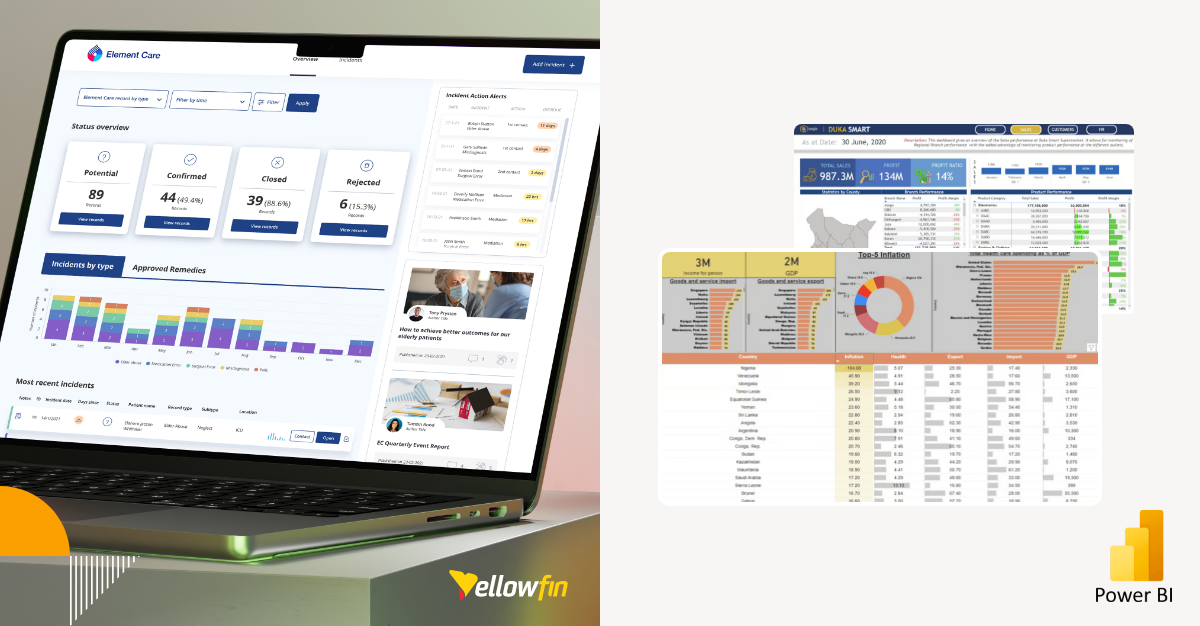 Read more: Top Power BI Alternatives for Embedded Analytics
Read more: Top Power BI Alternatives for Embedded Analytics
Enhancing marketing strategies with retail analytics
Market success becomes possible through retail analytics, which delivers customer activity data for creating specific and successful marketing strategies. Targeted campaigns succeed better when retail analytics segments the audience and helps retain high-value customers through its ability to track multichannel customer interactions accurately. Through promotional alignment with inventory levels, marketers can solve stock problems while conducting A/B testing that optimizes both content and promotional timing for improved effectiveness.What are the establishing measures?
Careful data analysis of the above areas can also enable retailers to develop effective measures for:- Assessing the components and success of marketing campaigns
- Evaluating and determining buying patterns
- Finding optimal mix of product types and quantities via region, store, season
- Deciphering optimal pricing strategies for product/category types
- Improving supply chain procedures
How big data is transforming the retail industry
Big data in retail is significantly transforming the retail industry in several impactful ways: Personalization and customer experience: Retailers are using big data to understand customer preferences and behaviors, allowing them to personalize shopping experiences, recommend products, and send targeted advertisements, thus enhancing customer satisfaction and loyalty. Supply chain optimization: Big data analytics helps retailers optimize their supply chains by predicting demand, managing inventory levels efficiently, and minimizing waste, thereby ensuring that products are available when and where they are needed. Dynamic pricing: By analyzing large sets of data, including market demand, competitor pricing, and inventory levels, retailers can implement dynamic pricing strategies to adjust prices in real-time, maximizing profits and competitiveness. Customer feedback and market trends: Retailers utilize big data to analyze customer feedback and social media trends, enabling them to adapt quickly to changing market demands and to improve products and services. Fraud detection and security: Big data tools allow for the analysis of transaction patterns to detect fraudulent activities, enhancing security measures and reducing losses due to fraud.The future of retail analytics
Real-time data analytics for retail will function as an automated operational component in business practices. Analytics systems will operate behind the scenes to automatically generate time-sensitive insights that users gain access to without manual interaction. Similar to how smartphones use location tracking to deliver anticipated services, retail analytics will embed within operational business methods, transparent to end users. Business operations will rely heavily on augmented analytics to generate insights that drive productive decisions automatically and establish itself as an essential framework for commercial expansion.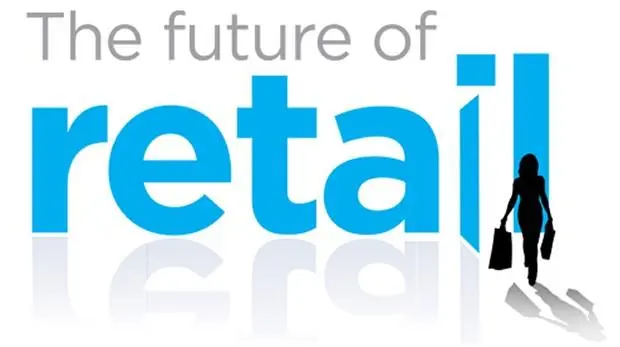 Ultimately, retail analytics will become increasingly integrated into business users' everyday activities and less about creating or reviewing weekly reports. Even if they are not aware of it, more individuals will benefit from AI in their daily business dealings. Analyses of data using AI will become commonplace and not as innovative.
Ultimately, retail analytics will become increasingly integrated into business users' everyday activities and less about creating or reviewing weekly reports. Even if they are not aware of it, more individuals will benefit from AI in their daily business dealings. Analyses of data using AI will become commonplace and not as innovative.
Why is retail analytics important?
One cannot exaggerate the importance of data analytics in the retail industry. It includes raising operational effectiveness, streamlining supply chains, and comprehending consumer behavior, all of which have a direct bearing on sales and client happiness. Retailers may make better-informed decisions by using business intelligence solutions to obtain insights about sales, inventory, demographics, and trends. Markets also demand that retailers use retail data analytics to maintain a competitive advantage. Through retail analytics, organizations achieve better inventory management while delivering personalized services at accelerated decision speeds. Through data-driven tools and practices, companies can achieve better efficiency and improved customer satisfaction along with increased business growth. Big data and artificial intelligence are driving the advancement of retail analytics, which holds promise for revolutionary possibilities in terms of future competitiveness and market adaptability. Adopting data analytics is ultimately crucial for success in retail.Retail Data Analytics FAQs
How can data analytics be used in retail?
In real terms, a store may utilize data analytics to: Recognize the quantity and average value of items sold in an order. Determine which goods sell the best, the worst, and all in between. Determine who your most valuable clients are.Which four types of retail analytics exist?
The four most popular forms of retail analytics, which are used to find new client categories and growth prospects, are diagnostic, prescriptive, predictive, and descriptive (described above).What is the scope of analytics in retail?
Big data analytics in retail allows businesses to provide suggestions for customers based on their past purchases, which leads to more individualized shopping experiences and better customer support. These enormous data sets are also useful for predicting trends and using market analysis to inform strategic decision-making.Which kinds of decisions does retail analytics help retailers make?
By giving business leaders advice on how much to order of a specific item, where to keep it, how much to charge for it, and what kinds of things are typically purchased together, retail analytics helps remove the guesswork out of retailing.How does retail data analytics improve everyday decision-making?
Retail analytics helps teams make smarter decisions by analyzing real-time sales, customer behavior, inventory levels, and store performance. Instead of guessing, retailers can adjust stock, pricing, marketing, and staffing based on accurate, data-driven insights — improving efficiency and profitability across all channels.Why is real-time analytics becoming essential for retailers?
Real-time analytics allows retailers to respond instantly to changes in demand, supply chain delays, product performance, and customer actions. With live dashboards and automated alerts, businesses can act quickly — optimizing replenishment, reducing stockouts, improving promotions, and enhancing the overall shopper experience.Which datasets should retailers analyze for better performance?
To get meaningful results, retailers should analyze customer purchase history, inventory movement, POS transactions, margin data, web behavior, promotion performance, and supply chain metrics. When these datasets are unified, they reveal actionable patterns that improve forecasting, marketing, pricing, and merchandising decisions.How do predictive analytics help retailers forecast demand?
Predictive analytics uses historical trends, seasonality, customer behavior, and external factors (events, holidays, price changes) to estimate future demand. This enables more accurate replenishment, reduces overstock and stockouts, and helps retailers plan promotions and product launches confidently.What challenges do retailers face when adopting analytics tools?
Common challenges include scattered data sources, inconsistent data quality, lack of system integration, low analytics adoption among store teams, and difficulty interpreting insights. Choosing a BI tool with automation, embedded dashboards, and AI-powered guidance can help overcome these obstacles.How does retail analytics improve customer experience and loyalty?
Analytics helps retailers understand customer preferences, buying patterns, and engagement behaviors. This enables personalized recommendations, targeted promotions, optimized store layouts, and proactive service — all of which improve customer satisfaction, loyalty, and lifetime value.What are the four main types of retail analytics and how do they differ?
- Descriptive: Explains what happened (sales, traffic, stock).
- Diagnostic: Explains why it happened (root cause).
- Predictive: Forecasts future outcomes (demand, trends).
- Prescriptive: Recommends actions to take next (pricing, stocking). Together, they help retailers plan, react, and optimize operations more effectively.
